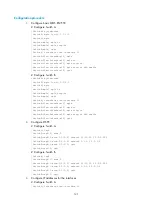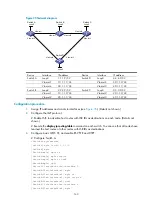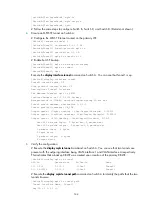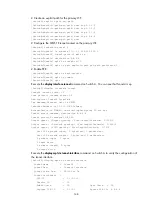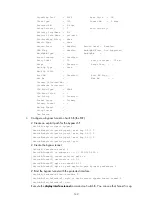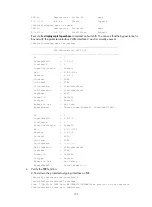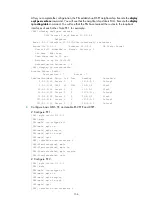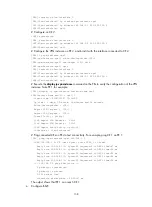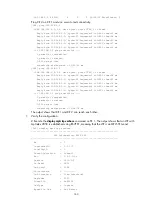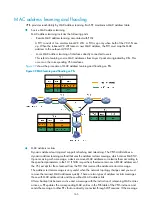
153
Admin State : Oper State : Modified
Ingress LSR ID : 1.1.1.1 Egress LSR ID: 4.4.4.4
Signaling Prot : RSVP Resv Style : SE
Class Type : CT0 Tunnel BW : 0 kbps
Reserved BW : 0 kbps
Setup Priority : 7 Hold Priority: 7
Affinity Prop/Mask : 0x0/0x0
Explicit Path Name : pri-path
Tie-Breaking Policy : None
Metric Type : None
Record Route : Enabled Record Label : Enabled
FRR Flag : Enabled BackUpBW Flag: Not Supported
BackUpBW Type : - BackUpBW : -
Route Pinning : Disabled
Retry Limit : 10 Retry Interval: 10 sec
Reopt : Disabled Reopt Freq : -
Back Up Type : None
Back Up LSPID : -
Auto BW : Disabled Auto BW Freq : -
Min BW : - Max BW : -
Current Collected BW: -
Interfaces Protected: -
VPN Bind Type : NONE
VPN Bind Value : -
Car Policy : Disabled
Tunnel Group : Primary
Primary Tunnel : -
Backup Tunnel : -
Group Status : -
Oam Status : -
If you execute the
display mpls te tunnel-interface
command immediately after an FRR protection
switch, you are likely to see two CR-LSPs in up state are present. This is normal because the
make-before-break mechanism of FRR introduces a delay before removing the old LSP after a new
LSP is created.
# Execute the
display mpls lsp verbose
command on Switch B. You can see that the bypass tunnel
is in use.
[SwitchB] display mpls lsp verbose
------------------------------------------------------------------
LSP Information: RSVP LSP
------------------------------------------------------------------
No : 1
IngressLsrID : 1.1.1.1
LocalLspID : 1
Tunnel-Interface : Tunnel4
Fec : 4.4.4.4/32
Nexthop : 3.1.1.2
In-Label : 1024
Out-Label : 1024



